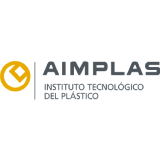The main uses and characteristics of polyethylene terephthalate (PET)
Polyethylene terephthalate (PET) is one of the most important plastics used in everyday life. The polymer has many commercial applications ranging from packaging, fabrics, films, electronics and many more on the list. However, the trail of PET uses is in the water and soft drink bottle.
What type of plastic is PET?
PET is a thermoplastic polymer that belongs to the polyester family. It is flexible, colorless and in a semi-crystalline state. Depending on the process applied in production, the final product can range from semi-rigid to hard. Polyester resin has excellent properties, such as mechanical and chemical resistance, and thermal and dimensional stability. As a result, it is a popular choice for plastics processors around the world.
Over the years, PET has become the world’s first recyclable polymer. Recycled PET is converted into fiber, packaging films and automotive accessories with the symbol “1” on the product.
Commercial grades of PET polymer
Additives, masterbatches and single-effect materials are decided based on the need for performance. Commercial grades of PET are found in flame retardant, high flow, heat resistant, glass reinforced and various engineering applications where strength is essential. In addition, fillers improve surface finish, reduce warpage and other process benefits.

Characteristics of polyethylene terephthalate:
El PET o tereftalato de polietileno tiene muchas propiedades idóneas:
PET or polyethylene terephthalate has many ideal properties:
Chemical resistance: PET has a high resistance to water, food and natural causes such as bacteria, fungi, etc. This makes it compatible with food packaging applications.
Transmittance: It is naturally transparent. However, its appearance is not as attractive as that of other highly transparent polymers, such as polycarbonate and acrylic. If high transparency is required, these polymers should be used instead of PET.
Shockproof: PET plastic is solid and strong. It is practically shatterproof, which is why it is used as an alternative to glass.
Polyethylene terephthalate is originally a thermoplastic, and is decided by the way it reacts to heat. However, there are many variants of polyesters that are considered thermosets.
The main difference between thermoplastics and thermosets can be attributed to the way they react to heat. Thermoplastics melt at their melting point ( 260°C for polyester ).
The major advantage of any thermoplastic when it is to be processed in injection molding is that when it melts, the liquid form can be cooled and reheated without much degradation.
In contrast, thermosets can only be burned once, since the first heating changes their chemical nature, which cannot be reversed.
Once their chemical nature is changed, any further heating will burn the polymer. This is one of the main reasons why thermosets are poor candidates for recycling.
Advantages of PET resin:
Increased strength and stiffness
Light weight for use in transportation.
Acts as a moisture barrier.
High thermal stability with use from -60 to 130 degrees.
Suitable for transparent applications and does not break easily.
Recyclable and usable in microwave radiation.
Safe for food and beverage with FDA and other health agencies approval.
Where is polystyrene terephthalate used?
Popular applications of polyethylene terephthalate (PET)
Food and beverage packaging is by far the most common application for PET, although it is also used for many other household and industrial products. Soft drinks, juices and water are almost always stored in PET containers. Other applications include peanut butter or jelly jars, cooking oil bottles or salad dressing bottles. Non-food packaging applications include shampoo and conditioner bottles, liquid hand soap containers and mouthwash bottles.
Non-food applications include food processing machinery components, valve components, filler pistons, bearings, wear pads, wheels and rollers. PET can also be used in textiles, especially in combination with materials such as cotton. In addition, PET is often used for 3D printed prototypes using fused deposition modeling (FDM).

What are the main uses of polyethylene terephthalate?
The main application of PET products:
Used in packaging applications for water bottles and carbonated soft drinks.
Non-oriented film to create packaging trays and blister packs.
Make PET film for use in adhesive tape application.
Used to make suitable cosmetic bottles, microwaveable containers and other packaging applications.
PET monofilament for making mesh fabrics in printing, filter oil and agriculture applications.
Woven belt, filter cloth, and others.
Automotive industry to make accessories such as windshield wiper arm, gear housing, engine cover and connector housing.
Electronics industry due to its insulating property.
Uses of PET in the textile industry:
PET uses come in different forms in the textile industry. Polyester fabrics are firm, flexible and prevent shrinkage compared to cotton. In addition, the materials are lightweight, crease and tear resistant, which enables the production of quality products. The use of PET/Polyester masterbatch helps improve product performance and durability. Therefore, it has become a popular additive for plastic processors to gain more benefits in manufacturing.
PET resin processing conditions:
PET is processed by injection molding, extrusion, blow molding and thermoforming. It is used to produce films and sheets and blow molding is used to provide transparent bottles in the industry. PET resin is also used to create numerous polymeric products used in everyday life. Plastic manufacturers can improve the productivity and efficiency of finished products.
In addition, recycled PET has many applications, such as the manufacture of carpets, jackets, quilt stuffing, bags, food, beverages, foils and strapping. The usefulness of PET depends on the grades of polymers.

Examples of polyethylene terephthalate.
Soft drink and water bottles; mouthwash bottles; peanut butter containers; salad dressing and vegetable oil containers; etc.
salad dressing and vegetable oil containers, etc.
Recycling: plastic containers with recycling symbol are collected in your blue recycling garbage can.













